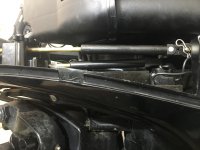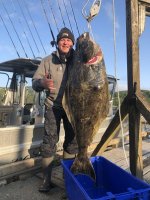Hi
My 2003 merc 115 efi is hard to get into reverse.
I've been looking at Youtube vids and my Clymer manual with no success
When i unhook the cable from the motor the helm control works fine i.e. no binding.
when I manually push the shifter pin (see pic with my finger) that goes into the motor it's a bit stiff going into reverse but usually clicks in fairly easy, some times i have to have the right pressure and angle to get it to shift. Should this pin move into reverse as easy or similar as it does to neutral and forward? If not what would the fix be?
when i do pull this pin from reverse into neutral it usually shoots to forward bypassing neutral ie the pressure.
motor in good condition, fluids changed annually and gear oil as well. has had a bump on the lower gear box years ago. pressure tested it and it's fine.
any thoughts on why it's so hard to get into gear?
Up date, I found a few more videos. when i do get the motor into reverse it stays there as it should. it's just getting it into reverse that is hard.
the latest vid i looked at talks about dog clutches. and talks about the motor coming out of gear which mine does not
could there be something else impeding my linkage?
ie drop the leg and put it back in?
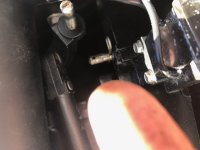
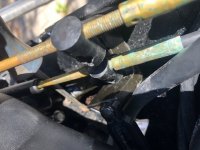
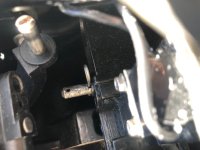
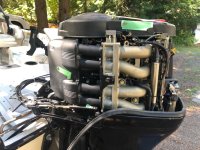
My 2003 merc 115 efi is hard to get into reverse.
I've been looking at Youtube vids and my Clymer manual with no success
When i unhook the cable from the motor the helm control works fine i.e. no binding.
when I manually push the shifter pin (see pic with my finger) that goes into the motor it's a bit stiff going into reverse but usually clicks in fairly easy, some times i have to have the right pressure and angle to get it to shift. Should this pin move into reverse as easy or similar as it does to neutral and forward? If not what would the fix be?
when i do pull this pin from reverse into neutral it usually shoots to forward bypassing neutral ie the pressure.
motor in good condition, fluids changed annually and gear oil as well. has had a bump on the lower gear box years ago. pressure tested it and it's fine.
any thoughts on why it's so hard to get into gear?
Up date, I found a few more videos. when i do get the motor into reverse it stays there as it should. it's just getting it into reverse that is hard.
the latest vid i looked at talks about dog clutches. and talks about the motor coming out of gear which mine does not
could there be something else impeding my linkage?
ie drop the leg and put it back in?




Attachments
Last edited:


